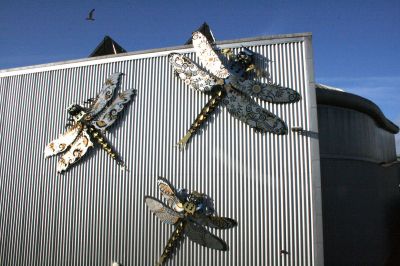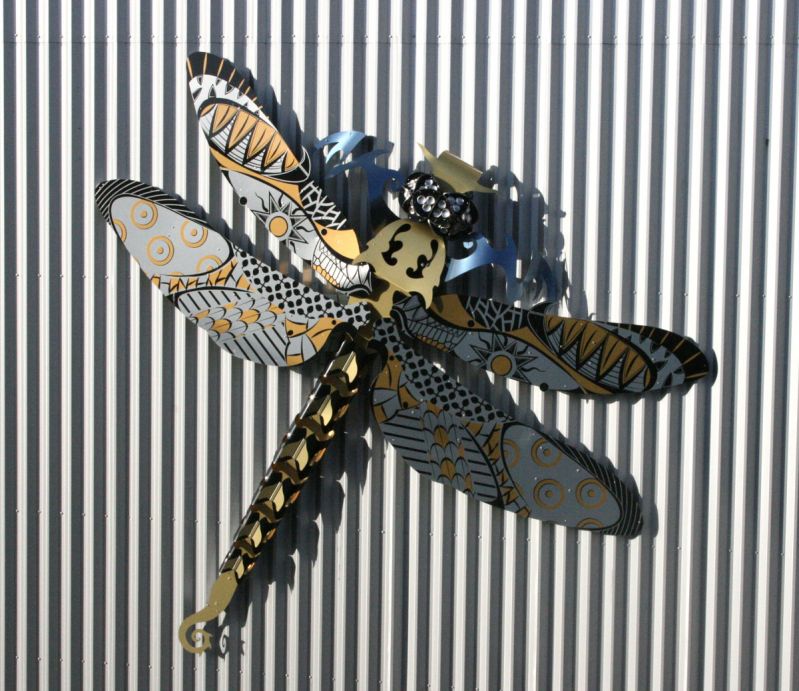Although primarily used for signage and display, Dibond aluminum composite material has been featured on a global scale in several unique applications. The Regency Dragonflies of Hollingdean in Brighton are the epitome of unique.
Designed by artist Lucy Williams of Lucid Design, along with artist Chris Hawkins and Amy Douglas, these Dibond/Alucobond dragonflies were part of an open competition to design artworks for a recycling center.
 Like many public facilities, aesthetics are not always the focal point in their architectural design. The competition including over 40 entrants and was established to add artistic value to these visually uninteresting buildings.
Like many public facilities, aesthetics are not always the focal point in their architectural design. The competition including over 40 entrants and was established to add artistic value to these visually uninteresting buildings.
According to the winning designer Lucy Williams the dragonflies were chosen as, “…a symbol of rejuvenation and the cycle of life.” The patterns on the wings were inspired by the regency pattern in Brighton Pavilion, a unique color and texture palette seen in the early 19th century. Additionally Williams explains, “The geodesic heads [of the dragonflies] have the ends of drink cans on them to create compound eyes.”
The project fabricator, NES Solutions, specified the Dibond material. It was chosen for its lightness of weight, malleability, and consistence in quality. The largest dragonfly has a wingspan of nearly 20 feet. Interestingly, the wings utilize Alucobond ACM, our partnering material, while the bodies of each insect use Dibond. The Alucobond material was chosen for the wings due to its rigidity from the thicker aluminum material used.
The use of metal materials, with some recycled parts, gives this industrial building a unique artistic twist.
Images courtesy of (c) Lucy Williams of Lucid Design
LED, illuminated night image, courtesy of (c) Kate Benjamin


